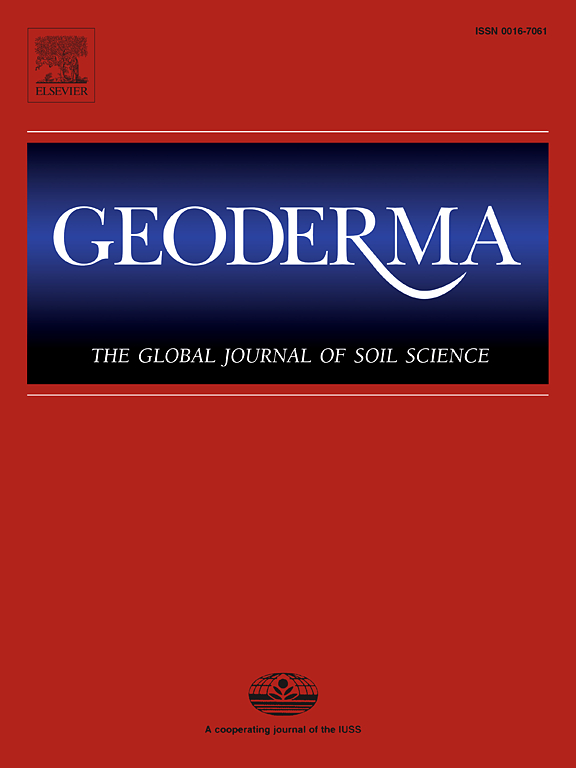Bio-based fertilizers typically deliver on either high nutrient release or soil health parameters
IF 6.6
1区 农林科学
Q1 SOIL SCIENCE
引用次数: 0
Abstract
The transition to a circular and bio-based economy requires nutrient recycling from agricultural, industrial, and societal by-products and wastes. Beyond their role in nutrient supply for crop production, bio-based fertilizers (BBFs) also have the potential to improve soil health by contributing organic matter. However, as the legal framework evolves and a broader range of BBFs becomes available, a key challenge for implementation and adaptation lies in the great variability of their nutritional value and effects on soil health. Therefore, the aim of this study was to examine the effects of a diverse sample of BBFs on both nutrient release (nitrogen, sulfur and phosphorus) and a range of soil health parameters. In an 11-month incubation study, we evaluated eleven different bio-based fertilizers: four digestates, two composts, insect frass, and by-products from animal, medicinal, and plant production and processing. The results revealed a trade-off between high nutrient release and soil health improvements. High N availability was significantly and negatively correlated to all examined soil health parameters, while most soil health parameters were positively linked to the amount of added carbon (C). To overcome the trade-off between nutrient availability and soil health, customized BBF blends with optimized nutrient and C profiles tailored to specific field needs may offer a practical solution for farmers. Further research, particularly under field conditions, is needed to fully understand the long-term effects of BBFs on soil properties and crop growth.
生物基肥料通常提供高养分释放或土壤健康参数
向循环和生物经济的过渡需要从农业、工业和社会副产品和废物中回收养分。除了在作物生产中提供养分的作用外,生物基肥料还具有通过提供有机质来改善土壤健康的潜力。然而,随着法律框架的发展和更广泛的土壤营养因子的出现,实施和适应的一个关键挑战在于其营养价值和对土壤健康的影响存在很大差异。因此,本研究的目的是研究不同的BBFs样品对养分释放(氮、硫和磷)和一系列土壤健康参数的影响。在一项为期11个月的孵化研究中,我们评估了11种不同的生物基肥料:四种消化肥料、两种堆肥、虫粪以及动物、药物和植物生产和加工的副产品。结果揭示了高养分释放和土壤健康改善之间的权衡。高氮有效性与所有土壤健康参数呈显著负相关,而大多数土壤健康参数与碳添加量呈正相关。为了克服养分有效性和土壤健康之间的权衡,根据特定的田间需求,定制具有优化养分和碳分布的BBF混合肥料可能为农民提供实用的解决方案。需要进一步的研究,特别是在田间条件下的研究,以充分了解bbf对土壤性质和作物生长的长期影响。
本文章由计算机程序翻译,如有差异,请以英文原文为准。
求助全文
约1分钟内获得全文
求助全文
来源期刊

Geoderma
农林科学-土壤科学
CiteScore
11.80
自引率
6.60%
发文量
597
审稿时长
58 days
期刊介绍:
Geoderma - the global journal of soil science - welcomes authors, readers and soil research from all parts of the world, encourages worldwide soil studies, and embraces all aspects of soil science and its associated pedagogy. The journal particularly welcomes interdisciplinary work focusing on dynamic soil processes and functions across space and time.
 求助内容:
求助内容: 应助结果提醒方式:
应助结果提醒方式:


